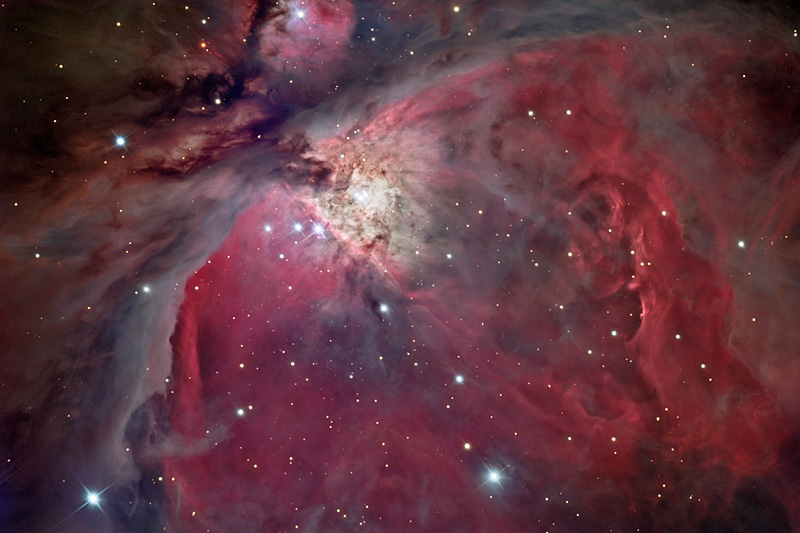| |
|
 |
|
|
|
|
|
The Great Orion Nebula |
|
About This Photograph
The Great Orion Nebula is a vast region of intense star formation. Massive, hot young stars — destined to lead short lives due to the rate at which they are consuming their hydrogen fuel — are the illuminating sources for the clouds of gas and dust that we see. Their intense ultraviolet light excites individual atoms in the nebula, causing them to fluoresce: each chemical element re-emits light in its own specific colors. The red seen in this image, for example, is mainly light emitted by excited Hydrogen atoms. The bluish areas are clouds of dust and gas that we see by their reflection of light from the young stars. These stars are blue in color due to their extremely high surface temperatures, on the order of 20,000-50,000 degrees Kelvin. (Our sun has a relatively cool surface temperature: "only" 5,500 Kelvin, or about 10,000°F.)
|
|
|
Technical Details |
| Optics: | 14" f/10 RCOS Ritchey-Chrétien Cassegrain | | Camera: | STL-11000M. | | Mount: | Astro-Physics AP1200GTO. | | Filters: | SBIG standard RGB. | | Dates/Times: | 4 December 2003. | | Location: | my backyard observatory in Austin, Texas. | | Exposure Details: | RGB #1 = 5:5:7.5 minutes (30-second individual exposures)
RGB #2 = 40:40:25 minutes (5-minute individual exposures)
Luminance = 100 minutes (5-minute individual exposures) | | Processing: | This was my first-light image with the STL-11000XM. What a camera!
Fairly extensive use of layering in Photoshop, in addition to DDP stretching, was used to comprehend the huge dynamic range in this object.
The second set of exposures was interrupted by | |
|
|
| |
|
|
|

